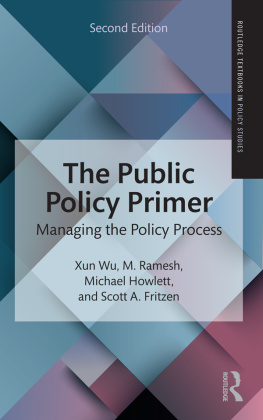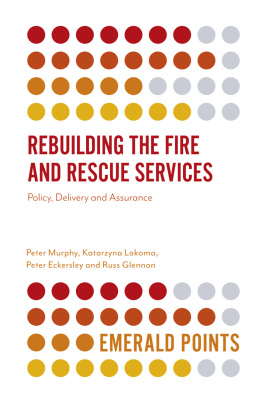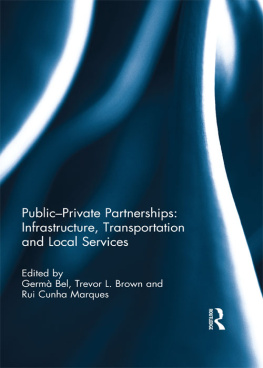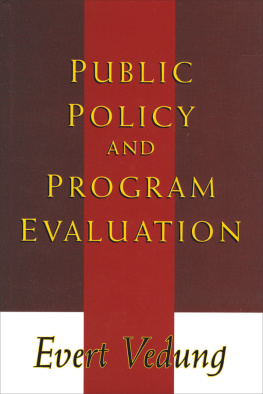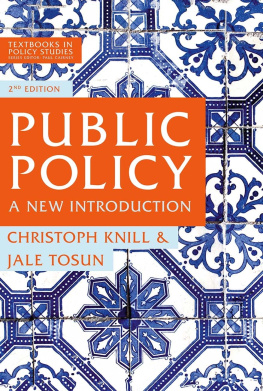Collaboration in Public Services
Comparative Policy Analysis Series
Ray C. Rist, series editor
Program Evaluation and the Management of Government
edited by Ray C. Rist
Budgeting, Auditing, and Evaluation
edited by Andrew Gray, Bill Jenkins, and Bob Segsworth
Can Governments Learn?
edited by Frans L. Leeuw, Ray C. Rist, and Richard C. Sonnichsen
Politics and Practices of Intergovernmental Evaluation
edited by Olaf Rieper and Jacques Toulemonde
Monitoring Performance in the Public Sector
edited by John Mayne and Eduardo Zapico-Goi
Public Policy and Program Evaluation
by Evert Vedung
Carrots, Sticks, and Sermons: Policy Instruments and Their Evaluation
edited by Marie-Louise Bemelmans-Videc,
Ray C. Rist, and Evert Vedung
Building Effective Evaluation Capacity
edited by Richard Boyle and Donald Lemaire
International Atlas of Evaluation
edited by Jan-Eric Furubo, Ray C. Rist, and Rolf Sandahl
Collaboration in Public Services: The Challenge for Evaluation
edited by Andrew Gray, Bill Jenkins, Frans Leeuw, and John Mayne
The Challenge for Evaluation
Collaboration in Public Services
Andrew Gray
Bill Jenkins
Frans Leeuw
John Mayne
editors
First published 2003 by Transaction Publishers
Published 2017 by Routledge
2 Park Square, Milton Park, Abingdon, Oxon OX14 4RN
711 Third Avenue, New York, NY 10017, USA
Routledge is an imprint of the Taylor & Francis Group, an informa business
Copyright 2003 by Taylor & Francis.
All rights reserved. No part of this book may be reprinted or reproduced or utilised in any form or by any electronic, mechanical, or other means, now known or hereafter invented, including photocopying and recording, or in any information storage or retrieval system, without permission in writing from the publishers.
Notice:
Product or corporate names may be trademarks or registered trademarks, and are used only for identification and explanation without intent to infringe.
Library of Congress Catalog Number: 2002042998
Library of Congress Cataloging-in-Publication Data
Collaboration in public services : the challenge for evaluation / edited by Andrew Gray ... [et al.].
p. cm. (Comparative policy analysis series)
Includes bibliographical references and index.
ISBN 0-7658-0183-3 (cloth : alk. paper)
1. Political planningEvaluation. 2. Administrative agenciesEvaluation. 3. Intergovernmental cooperationEvaluation. 4. Public-private sector cooperationEvaluation. 5. Contracting outEvaluation. I. Gray, Andrew, 1947- II. Series
JF1525.P6C64 2003
352.5'38dc21
2002042998
ISBN 13: 978-0-7658-0183-8 (hbk)
Contents
Andrew Gray, Bill Jenkins, and Frans Leeuw
John Mayne, Tom Wileman, and Frans Leeuw
Bill Jenkins, Frans Leeuw, and Sandra Van Thiel
Robert Schwartz
John Mayne and Olaf Rieper
Gran Arvidsson
John Mayne
Marie-Louise Bemelmans-Videc
Bob Segsworth
Andrew Gray and Bill Jenkins
By most accounts, and certainly in my own judgment, the 1990s will go down in the annals of public administration as a decade of very significant and lasting change. Admittedly, in some countries the momentum for change started a few years earlier as was the case in New Zealand when that country faced an urgent financial crisis. It is also true that some of the changes that may have been set in motion in the 1990s will not play themselves out fully for years. Such may be the case for collaborative arrangements, which were put in place in great numbers during that period, although the impact of these structures on governance and accountability was not fully understood and will not be fully mastered for some time yet, if ever. The same holds true, of course, for the evaluation of public programs delivered through collaborative arrangements within governments and between governmentsthe subject of this very interesting book.
The important reforms that we witnessed in the 1990s were driven by a number of factors. We can point to the huge financial pressures faced by many governments, to political ideology that aimed at reducing the role of government or increasing competition in the provision of public services or to plain common sense, that is, the old ways of delivering public services were simply becoming untenable in a modern world of instant communications and increasingly sophisticated and informed citizens. Whatever the reasons, public management reforms are a reality and all those who have a role to play in the functioning of our public institutions must face that reality. It is true that, even around the notion of collaborative arrangements, there can be some competing philosophies. As one of the authors in Collaboration in Public Services describes it, some may see collaboration among partners and institutions as essential in its own right while governments of a more conservative stripe could see such arrangements as an opportunity to promote more competition as the solution to efficient service. Some might therefore be tempted to wait things out and see if these arrangements continue to grow or really last before spending too much energy or intellectual capital on resolving the management and technical challenges that they pose. I personally do not think that this is just a trend or a new label for old practices. On the contrary, as this volume indicates, collaborative arrangements are likely to stay with us and even grow in popularity and, as such, they represent a unique opportunity for practitioners to advance the cause of accountability and results-based management.
Indeed, I am convinced that most people, including politicians and public servants who may find this a burden at times, would agree that enhanced transparency and accountability lead to stronger institutions and more effective government. Clear, timely information on money spent, where it went and what it achieved makes it easier for those outside an organization or program structure to monitor consistency with policy intentions and the effectiveness of public programs. Moreover, I would add that a society or country must be able to criticize itself if it wants its institutions to achieve superior levels of performance. Although there may be certain risks in doing so, namely that we may be too hard or negative on ourselves, self-criticism is essential if a country or jurisdiction wants its institutions to rank among the best in the world. Program evaluation is an essential part of that self-criticism and, as such, has a key role to play with the advent of new collaborative structures. If somehow the challenges and complexities of these arrangements led to a diminution of program evaluation functions, this would lead to a weakening of accountability mechanisms with negative consequences on institutional performance.
However, program evaluation practitioners and the auditing community with which I am familiar must wade carefully through the new governance models that are emerging. These can be highly complex relationships, which have been put together after sometimes extremely difficult political negotiations or negotiations with private sector providers concerned with commercial confidentiality. Public servants who have put these structures together may very well make the point, particularly in partnerships between governments, that compromises were made in order to reach an agreement and that there is a risk that evaluations could aggravate tensions among partners. This danger, in my view, tends to be somewhat exaggerated. And as the chapters in this volume suggest, practitioners must allow for experimentation and evolution in the governance and accountability structures that are put in place. Even as a former auditor general (who would normally insist on clear accountability structures as well as clear performance objectives), I would argue that practitioners should be able at this early stage of collective learning to accept softer accountabilities. The partners must work through their inevitable early difficulties and build upon their experiences to continuously improve the arrangements. Although this is not always the case, some arrangements can be so complex that it would be foolish and counterproductive to expect that all of the issues could be nicely circumscribed up front in a written agreement. In the short term, there are bound to be significant differences between the expectations of the partners and the perceived reality, and timely discussions will need to take place in order to adjust expectations or modify the arrangements. In the longer term, more fundamental changes could be necessary.








